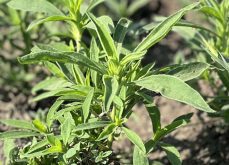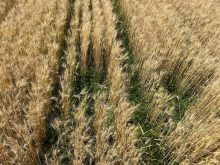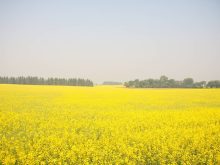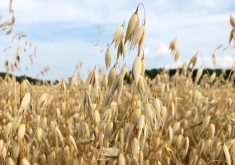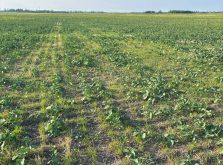On average, more than 22 million acres of canola are planted in Western Canada each spring.
Flea beetles will damage or destroy a significant portion of those cropped acres in any given year. What can farmers do to best protect their crops? The two most common options are treated seed and insecticide sprays. Insecticide seed treatments can be effective in dealing with flea beetles before the pests become a major concern while insecticide sprays are an efficient in-season tool to deal with this potentially damaging insect pest.
Tyler Wist, a research scientist and field crops entomologist with Agriculture and Agri-Food Canada (AAFC), spoke about flea beetles and what can be done to control them during a presentation at Manitoba Ag Days, held Jan. 17-19 in Brandon.
Read Also
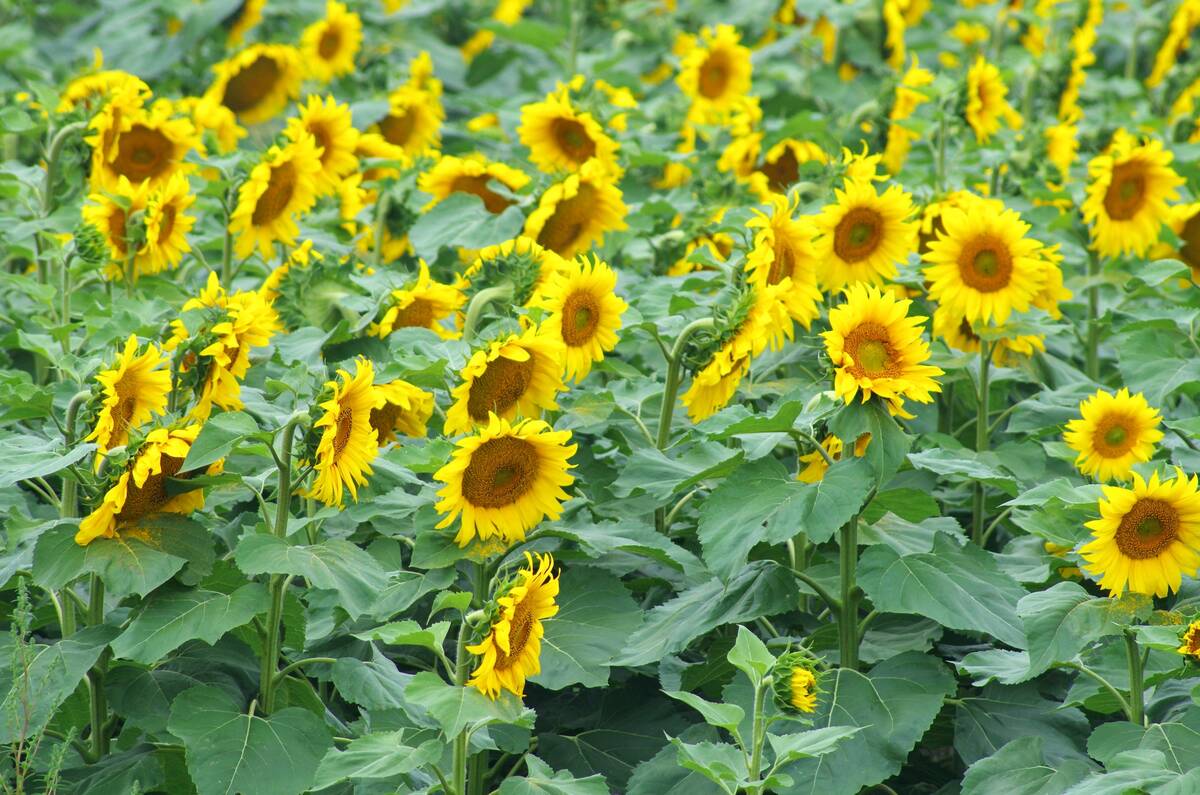
Made-in-Manitoba sunflower hybrid headed to market
Manitoba’s confection sunflower growers will have a new seed option next spring developed specifically for performance in the province. The…
Wist called flea beetles “the worst canola pest in Western Canada” because they attack canola plants when they are young and still vulnerable.
So, which is more efficient, insecticide seed treatments or in-crop foliar spray applications? Wist said both can be effective tools, although they each have their own respective strengths and weaknesses. He pointed out that one of the challenges with using foliar sprays is growers have a very small window of opportunity during which they can use them.
“You can scout in the morning, and you’re at that 25 per cent threshold. Then you get really strong flea beetle pressure in hot and dry conditions, and suddenly you can be up to 50 per cent damage by the afternoon,” said Wist, who works out of AAFC’s Saskatoon Research and Development Centre. “This is why seed treatments are so important. If they’re there and they’re working, then it gives you more of an opportunity to react (later on with spraying).”
Wist cautioned that seed treatments aren’t a cure-all when it comes to preventing flea beetle damage, but they do give growers a better fighting chance to get an insect pest population under control before it can cause significant damage in the field.
Most canola seed treatments contain neonicotinoids, a synthetic form of nicotine that is a potent neurotoxin for insects. It’s added to the seed coat of the seed and a small amount is taken up by the plant following germination and then ingested by insects when they feed on the plant.
Canada came very close to banning neonicotinoids in 2018 following a similar moratorium that was introduced in the European Union in 2013 over concerns about the effects neonics were having on bees, says Wist.

Ban considered
Ottawa called for a halt to the ban following the release of results of a 2017 study on the economic and environmental effects of the EU ban on the oilseed rape industry conducted by HFFA Research.
According to the HFFA study, the ban resulted in an estimated 350 million euros (C$505 million) in total revenue losses, including 50 million euros (C$72 million) in lost revenue due to lower quality rapeseed. The ban also resulted in 120 million euros (C$173 million) in additional production costs, including insecticide sprays and diesel fuel, and a four per cent loss in the area where rapeseed could be grown.
Ironically, while the ban was meant to protect the local ecosystem, Wist said it ultimately proved to be environmentally costly.
The HFFA study showed the ban created an additional 80.2 million tons of CO2 emissions, equivalent to slashing and burning 333,000 hectares of Indonesian rainforest. As well, additional foliar insecticide applications added greenhouse gas emissions of 0.03 million tons of CO2 equivalents and required an additional annual water usage of 1.4 million cubic metres.
The ban also caused a five-fold increase in pyrethroid pesticide usage, which resulted in cabbage-stem flea beetles developing a resistance to those chemicals. To make matters worse, another study conducted by the Society of Chemical Industry showed the ban actually had an adverse effect on bees because it resulted in a huge decrease in flowering plants that bees would normally feed on in spring.
Regular scouting
Wist said the best advice he has when it comes to spraying for flea beetles is to conduct regular field scouting and to take note of how much damage the beetles have caused. If damage appears to have significantly increased in a follow-up inspection, it is likely time to begin spraying, he said.
However, he warned growers to remember that every time they get on a tractor to apply a spray it means their greenhouse gas emissions are going to increase. Another downside to spraying, he said, is that it can have a detrimental effect on beneficial insects such as ground beetles, which can help keep flea beetle populations under control.
“Remember, you’re spraying everything, not just the canola, but the ground too,” he said, adding studies have shown chemical solutions such as organophosphates can remain toxic in the ground for up to a week after spraying.

Concerning trend
The two types of flea beetles that pose the greatest threat to canola are the striped flea beetle and the crucifer flea beetle. As its name suggests, the striped flea beetle has stripes down its back while its crucifer counterpart has a longer shape with a blue/black shell. Both can cause a similar amount of damage and tend to do more damage when temperatures are 30 C or warmer.
Wist said one trend that is concerning him and some of his colleagues is how striped flea beetles, which tend to be more common in northern growing regions of the Prairies, have started to migrate south over the past decade. That means it’s becoming more common to find both types of flea beetles in the same fields in the southern Prairie region.
“Now, in those places where you have a mixed population, you have a much longer flea beetle season because the striped flea beetles will come out in the spring one to three weeks before the crucifer flea beetle will,” he said.
Wist was asked by a farmer during his presentation at Ag Days about what is being done in plant breeding to help fight flea beetles. Wist said most of the big ag companies have started to look at adding genetic resistance in canola, but it will be some time before those efforts bear fruit.
AAFC is also currently working on a couple of projects to develop insect resistance in canola. One of the more promising ones, according to Wist, is a “hairier” version of canola with trichomes, or fine hair outgrowths or appendages, that would serve as small swords or spears to protect canola plants from flea beetles.
AAFC is also currently studying the effects different types of plants and habitats have on flea beetle populations. While it’s too early to say what might come out of that study, Wist said it has already shown some interesting trends, including when flea beetles move out of fields and into overwintering habitats.
As far as what 2023 holds in store, Wist said it’s far too early to say whether flea beetles are likely to pose a problem for canola growers on the Prairies this coming season.
“If I had a crystal ball for flea beetles, we would use it,” he said, laughing. “What we’ve found year over year is that it’s really hard to predict flea beetle populations. The predictive ability of that generation that overwinters and then comes out the next year, it’s just not there. Even if you wipe them out in an area, they can move back in from another area.”




